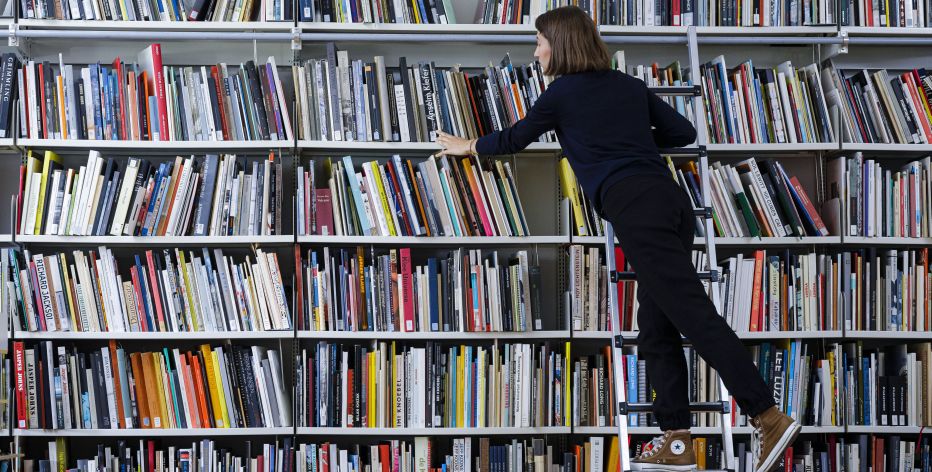The planning team directed by the architects is currently developing the building together with staff from the Staatliche Museen zu Berlin (National Museums in Berlin). At the same time, curators are creating the preliminary design for the more than 9,000 square meters of exhibition space. Their design will continue to develop and gain focus until the museum is ready to be set up. The following is a brief introduction to their initial ideas and areas of critical focus.
The “Age of Extremes”
The twentieth century has been called the “age of extremes” (Eric Hobsbawn). It was the century of totalitarian forms of government such as national socialism and communism, two devastating world wars, the century of the Holocaust, the atom bomb, and the Iron Curtain. It was a century of progress and revolutions, emancipation movements, post-colonial independence, and globalization of markets and forms of life. Technical inventions such as cars, airplanes, space travel, radio, television, and the Internet have changed how we experience space and time. But technical progress went hand in hand with massive environmental destruction caused by humans.
Artistic Perspectives of the Twentieth Century
Twentieth-century artists critically examined these intrinsically contradictory developments, reflecting them and scrutinizing them as well. In the new museum, viewers can see twentieth-century events – some of which they experienced themselves – from the perspective of art and rethink them from today’s perspective. As a reaction to the century’s extremes, artists repeatedly and thoroughly questioned their position and their medium: What is art? What role does it play in society?
Artists critically examine their respective eras in very different ways. In the twentieth century, very diverse, even opposing art movements such as Surrealism and New Objectivity, color-field painting and Concept Art, installation art with elaborate media and performances documented only on film breathed the same air. Art after 1960 was marked by a great deal of openness, experimentation, and provocation. The new building at the Kulturforum will accordingly be a place of contradiction, a place of irritation and non-conformity. The spectrum of and overlaps among various media and genres in twentieth-century art are reflected in the building’s remarkably diverse spaces and exhibits.
Focal Topics as Guides through the Exhibition
In the new building, the curators plan to present the spectrum of art movements in new contexts. They will be guided by content-related concepts instead of pure chronology. In the spirit of autocriticism, the exhibition intends to examine in detail the Euro-American, Western focus of the Nationalgalerie collection – which is explained by the political situation of post-war Germany – and to expand it. Therefore, the Hello World exhibition was a pilot project. The topic of “German-German division” will be a focal point of its own, since the Nationalgalerie has a large collection of artworks that were created in the GDR. The Kulturforum and Potsdamer Platz are near the former Berlin Wall, and their location-specific history makes the new building the obvious
place to present artists’ critical examinations of East and West German history. Overarching topics such as birth and death, war and peace, ecology and environmental destruction will be the storylines in the permanent exhibition.
In an audio room in the middle of the exhibition route, visitors can listen to trendsetting and experimental works of music from the twentieth century that are related to the works of visual art.
Key Artworks on Permanent Exhibit
Several key works of the Nationalgalerie and the private collections will be on permanent exhibit. Ideal spaces that take into account their central importance in the stories of the collections along with their size and weight will be created for these works. The locations where main works will be placed have basically been decided, such as the installation Das Kapital Raum by Joseph Beuys (1970–77), the painting Mao by Andy Warhol (1973), the large sculpture Die Volkszählung by Anselm Kiefer (1990), the installation Raum des verwundeten Affen by Rebecca Horn (1990), and the video sound installation He Weeps for You by Bill Viola (1976). But most of the exhibition areas are designed to be so flexible that they can be used to present different art movements and groups of works. The presentations will be brought up to date regularly with reference to current topics and social issues.
The art of the twentieth century will be presented in the new building within the context of the history of that same century. To achieve this, historical documents, archival materials, or literature will be exhibited along with the relevant artworks. This curatorial approach means that the Nationalgalerie, the Kunstbibliothek (Art Library), and the Kupferstichkabinett (Museum of Prints and Drawings) will be working as partners in the new museum. Loans from the Staatsbibliothek (State Library), the Ibero-Amerikanisches Institut (Ibero-American Institute), the Staatliche Institut für Musikforschung (State Institute of Music Research), or the Kunstgewerbemuseum (Museum of Decorative Arts) can supplement or enhance the content of the permanent exhibition.
The Kunstbibliothek will continue to have exhibitions in its own building, but it will also present its unique collection of twentieth-century placard art and architectural models in a special repository in the new museum. The Kunstbibliothek will also curate rotating exhibition of book art and objects from artist’s archives with their own content-related focuses. And in addition to its main building, the Kupferstichkabinett will have a prominent exhibition space for twentieth-century graphic art in the new museum building.
